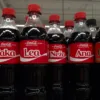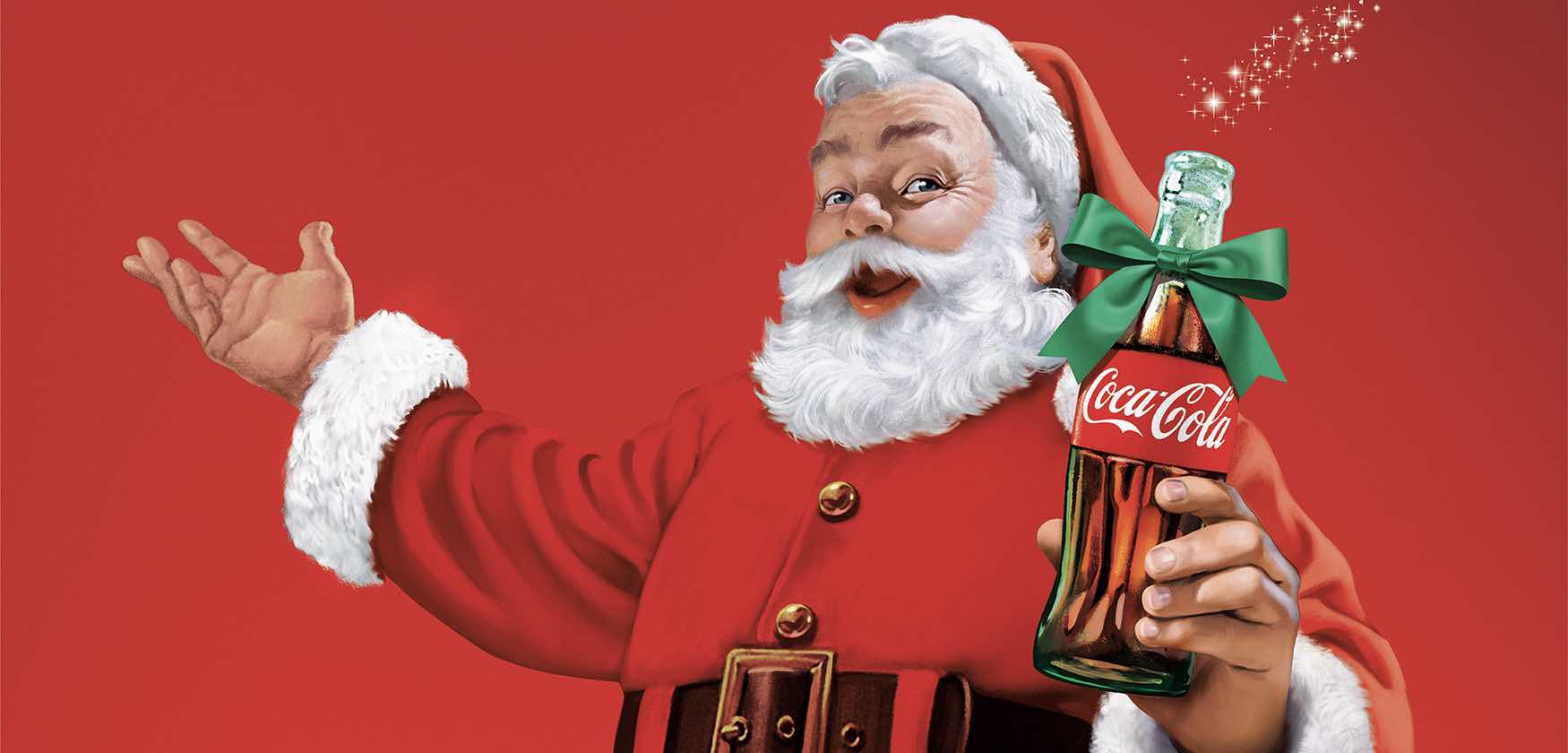In a year when few things seem normal, stable or comforting, we can count on one thing - Coca-Cola celebrates and shares the magic of Christmas. In fact, it's a special holiday season for Coca-Cola as it marks 100 years of Christmas advertising. For more than a century, Coca-Cola's Christmas ads have captivated generations during the holiday season, from Santa Claus painted by Haddon Sundblom to Coca-Cola polar bears and Christmas trucks with the slogan "Holidays are coming."
As always at Coca-Cola advertising campaigns also change with the times, reflecting cultural trends and historical events. The new Christmas campaign launched worldwide this month is no different. It highlights the importance of being "present" with our loved ones, even if we cannot be together in person. A campaign with the title "Letter" reflects the zeitgeist and reminds us that the best gift we can give at Christmas is simply... each one of us.
About Santa Claus and Coca-Cola
The Santa we all know and love—that big, jolly man in a red suit with a white beard—didn't always look like this. In fact, many people are surprised to learn that he was Santa before 1931 depicted very differently: from a tall thin man to a creepy elf. He was dressed in a bishop's robe and the animal skin of a Norse hunter. When cartoonist Thomas Nast drew Santa Claus for Harper's Weekly magazine during the American Civil War in 1862, Santa Claus was a small elf character who supported the "Union." Nast continued to draw Santa Claus for another 30 years, changing the coat color from brown to red, as we know it today.
Santa Claus has been featured in advertisements for Coca-Cola since the 1920s
The Coca-Cola Company started its Christmas advertising in the 1920s. It used shopping-related advertisements that appeared in magazines such as The Saturday Evening Post. In the first advertisements with Santa Claus, he was depicted with a stern expression on his face in the spirit of Thomas Nast's depictions. In 1930, the artist Fred Mizen painted Santa in a department store in the middle of a crowd, drinking a bottle of Coca-Cola. The ad featured the world's largest soda fountain, which was located in a Famous Barr Co. department store. in the city of St. Louis. Mizen's image was used that Christmas season in print advertisements that appeared in The Saturday Evening Post in December 1930.
Coca-Cola helped shape the image of Santa Claus
In 1931, the company began publishing Coca-Cola advertisements in popular magazines. Archie Lee, CEO of D'Arcy Advertising Agency, which worked with The Coca-Cola Company, wanted the campaign to show a holistic Santa that was both real and symbolic. Coca-Cola is so to the illustrator To Haddon Sundblom, born in Michigan, commissioned the production of advertising images that they show Santa himself and not a man dressed as Santa.
Sundblom found inspiration in Clement Clarke Moore's 1822 poem titled "Visit St. Nicholas", also known as “Twas the Night Before Christmas”. The author's description of Saint Nicholas led to the image of a warm, friendly, pleasantly abundant and human Santa Claus. It is often said that Santa Claus wears a red coat because red is the signature color of the Coca-Cola brand. However, Santa appeared in a red coat even before Sundblom painted him. Sundblom's Santa made his debut in 1931 in advertisements for Coca-Cola in The Saturday Evening Post magazine, where he appeared regularly. In addition, he has been published in magazines and newspapers such as Ladies Home Journal, National Geographic, The New Yorker and Hers.

From 1931 to 1964, Coca-Cola advertising showed Santa as he was fetching toys and playing with them, stopping to read a letter and enjoy a Coke, mingled with the children who were awake in the middle of the night to greet him, and served himself from refrigerators in many homes. Sundblom's original oil paintings were adapted for Coca-Cola advertising in magazines and shop windows, billboards, posters, calendars and plush dolls. Many of these products are popular collectibles today.
Sundblom created his final version of Santa Claus in 1964, and Coca-Cola advertising continued to feature Santa Claus based on the author's original works for several decades. These paintings are among the most prized works of art in the company's archive. They were exhibited all over the world, in famous places and museums.
"The New Santa" was based on a salesman
In the beginning, Sundblom painted the image of Santa Claus using a live model - his friend and retired salesman Lou Prentiss. When Prentiss died, Sundblom used himself as the model and painted while looking in the mirror. Finally, he began to rely on photographs to create the image of St. Nicholas. The children who appear with Santa in Sundblom's paintings are related to the author's neighbors - two little girls. So he turned one of them into a boy in his pictures. The dog in Sundblom's 1964 Santa painting was a real gray poodle from a flower shop in the author's neighborhood. But Sundblom wanted the dog to stand out on the festive scene, so he painted the animal with black fur.
Santa Claus got a new friend in 1942
In 1942, Coca-Cola introduced another character, by name "Sprite Boy". It is about a boy who appeared with Santa Claus in Coca-Cola advertising in the 1940s and 1950s. Sprite Boy, also created by Sundblom, got his name from the fact that he was an elf. It was not until the 1960s that Coca-Cola introduced the popular drink Sprite.

The 90s featured polar bears and Christmas trucks
In 1993, a new Christmas icon was born when they appeared on television for the first time Coca-Cola polar bears. In fact, polar bears were not entirely new, as Coca-Cola first used them in France in 1922. Writer and director Ken Stewart he animated them for television, and in 2013 the legendary film director added his touch Ridley Scott. He directed a short film "Snow Bear" (English Snow Bear), which captured the feeling of being present for our families during the Christmas season.
In 1995, it was introduced in the USA Coca-Cola Christmas Trucks. With twinkling lights, a charming winter landscape and unforgettable music "Holidays are Coming" ("Holidays are coming") trucks quickly became a recognizable symbol of Christmas in many countries of the world. They also drew on the heritage of Coca-Cola's Christmas past, because it is Sundblom's Santa decorated the sides of the trucks. In some markets, research shows that many consumers associate the first sight of Coca-Cola trucks with the real start of the holiday season.

Santa Claus became an animated character in 2001
Sundblom's Santa Claus artwork from 1963 became the basis for an animated television commercial featuring Coca-Cola's Santa Claus in 2001. The commercial was created by an Academy Award-winning animator Alexander Petrov.







